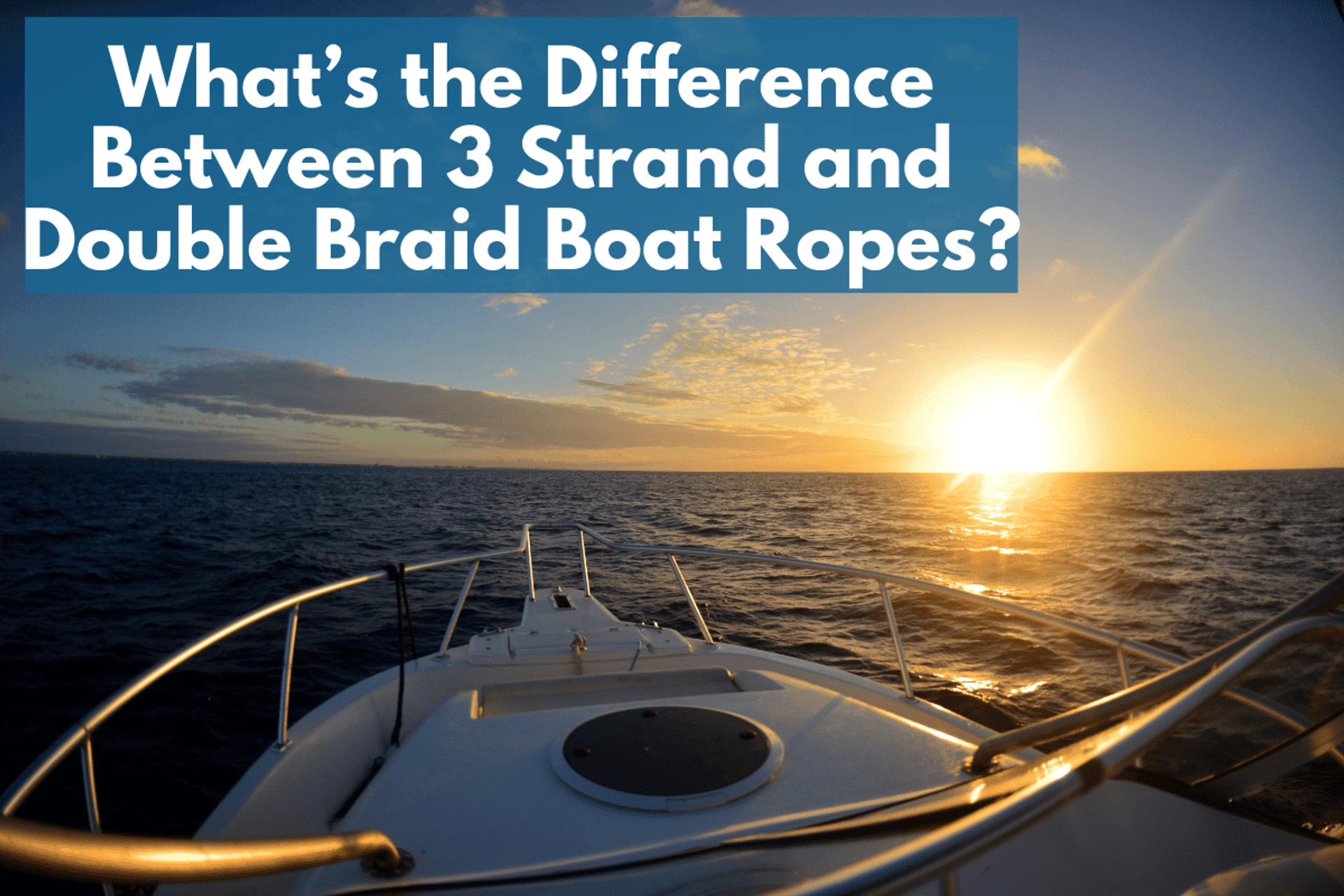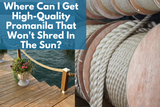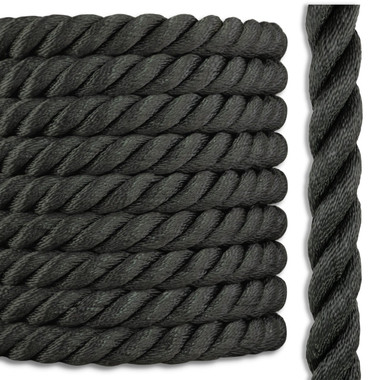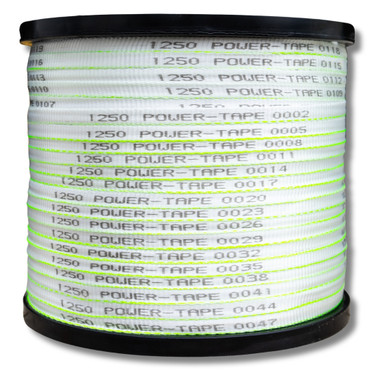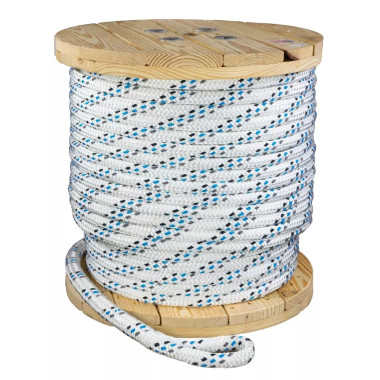What’s The Difference Between 3 Strand and Double Braid Boat Ropes?
Estimated 0 min read
It’s no secret that boats are a significant investment. So it stands to reason that you don’t want to skimp on the thing that keeps your boat secured and safe—dock lines, anchor lines, and mooring lines. When looking into what type of boat ropes you should buy, it’s not unusual to feel overwhelmed by choices, not really knowing why you should choose one over the other. Today’s blog will break down the difference between 3 Strand and Double Braid boat ropes as it applies to docking, anchoring, and mooring. Read on to learn the advantages and disadvantages of each so you can make an informed choice.
Understanding Rope Constructions
Before diving into specific applications, it's helpful to understand what sets 3-strand and double braid ropes apart.
3-Strand Rope: This traditional rope is constructed by twisting three strands together. It's known for its elasticity, ease of splicing, and cost-effectiveness. The twisted design allows for significant stretch, which can be beneficial in certain situations. On the downside, 3 Strand Rope can hockle if it is twisted in the opposite direction of its lay, which can permanently deform the rope.
Double Braid Rope: Also known as braid-on-braid, this rope features a braided core encased in a braided sheath. This construction offers high strength, soft lay, and a smooth, flexible feel. It's often favored for its durability and handling characteristics. It is more difficult to splice however, so take this into consideration.
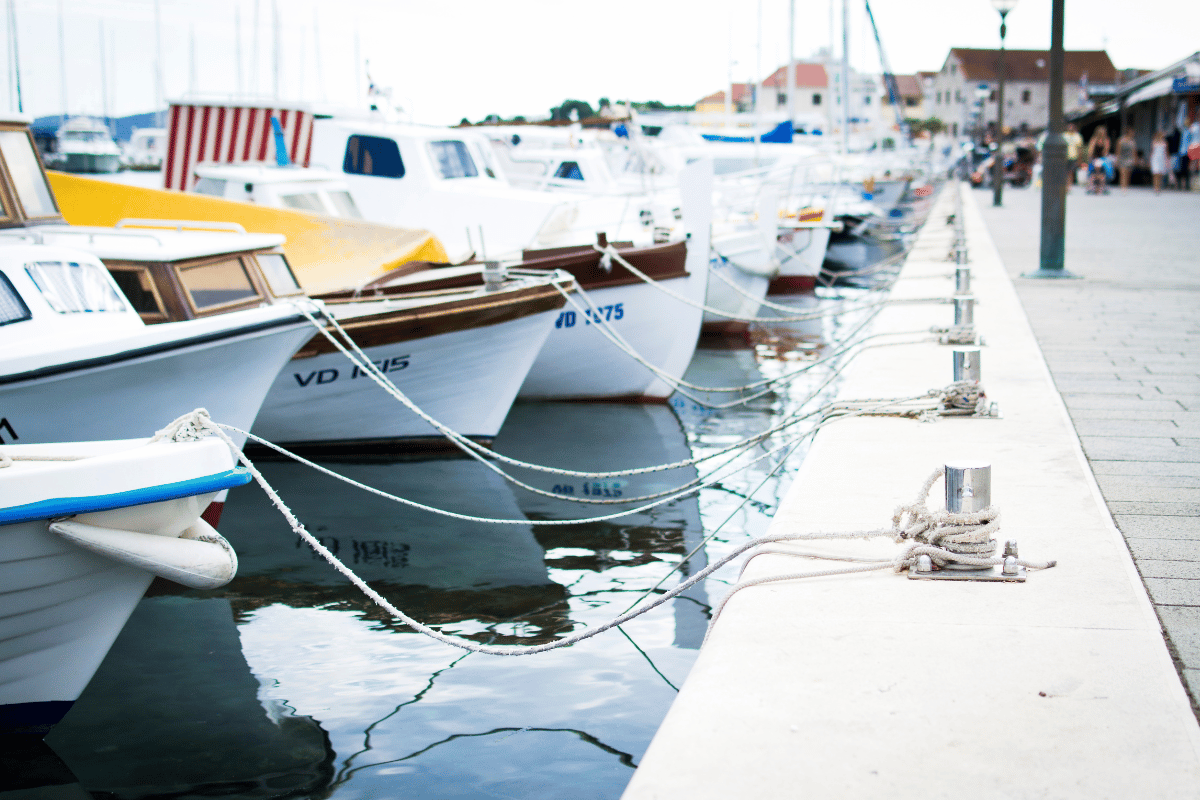
Dock Lines: 3-Strand vs. Double Braid
Dock lines are your boat's lifeline, absorbing shocks from waves and wind. Whether buying transient or permanent dock lines, you should be looking for roughly the same qualities, just with permanent lines you may wish to add a chafe guard. The choice between 3-strand and double braid depends on several factors.
3-Strand Dock Lines
- Stretch and Shock Absorption: The inherent elasticity of 3-strand rope provides excellent shock absorption, reducing stress on your boat and dock hardware.
- Durability: This rope is known for its durability and resistance to abrasion, making it suitable for various docking conditions.
- Cost-Effective: Generally, 3-strand ropes are more affordable, making them a budget-friendly option for many boaters.
- Ease of Splicing: Splicing 3-strand rope is straightforward, allowing for easy customization of lengths and loop sizes.
Double Braid Dock Lines
- Strength: Double braid ropes offer higher strength compared to 3-strand ropes of the same diameter
- Smooth Handling: The smooth surface is gentle on the hands and makes for easy handling and coiling.
- Torque Free: This construction of rope does not hockle.
- Aesthetic Appeal: Double braid ropes often have a more polished appearance, which some boaters prefer.
Recommendation: For general docking purposes, 3-strand dock lines offer a balance of performance and value. However, our double braid dock lines don’t cost much more, and with a unique polyester cover over nylon core they offer the best durability you can find in a dock rope. For a longer lasting boat rope, we recommend our double braid dock line.
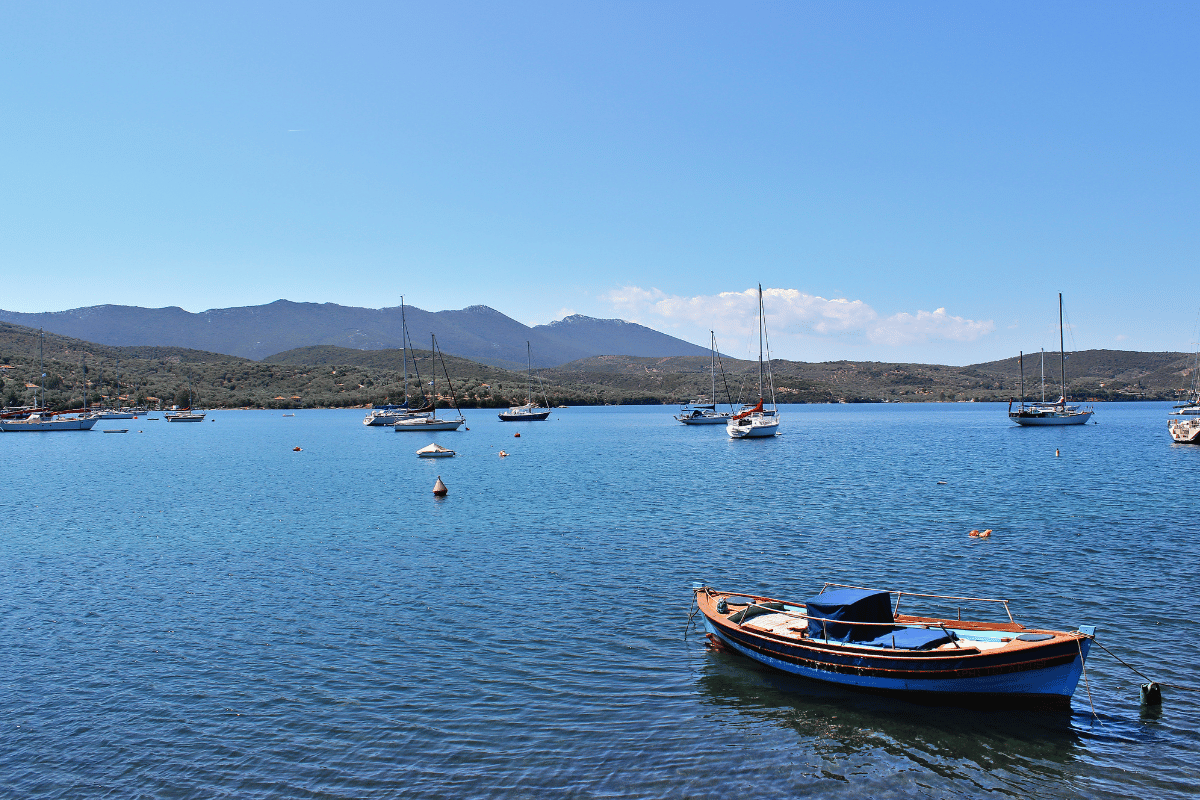
Anchor Lines: 3-Strand vs. Double Braid
An anchor line, or rode, connects your anchor to your boat and plays a crucial role in anchoring effectiveness. If using with a windlass, make sure you check your manual to see what type of rode is recommended.
3-Strand Anchor Lines
- High Stretch: The elasticity helps absorb the dynamic loads from waves and wind, reducing strain on the anchor and boat.
- Durability: Resistant to abrasion and wear, making it reliable for anchoring.
- Ease of Splicing: Simple to splice, allowing for secure attachments, repairs (we don’t recommend this though) and length adjustments.
- Cost-Effective: More affordable, making it a popular choice among boaters.
- Brands: Most Lewmar and Maxwell brand windlasses require a 3-strand or 8-Strand Brait Rope.
Double Braid Anchor Lines
- Strength: Offers higher tensile strength, providing a robust connection to the anchor.
- Smooth Handling: Easier to handle and stow in your anchor locker, with a flexible and kink-resistant nature.
- Torque Free: Again, double braid won't hockle and become deformed when twisted.
Recommendation: For most anchoring situations, 3-strand anchor lines provide the necessary stretch and durability. However, if you require higher strength and less stretch, consider double braid anchor lines. Finally, make sure you check your Windlass for compatibility. Check out our 3-strand anchor lines and double braid anchor lines to choose the right option for your vessel.
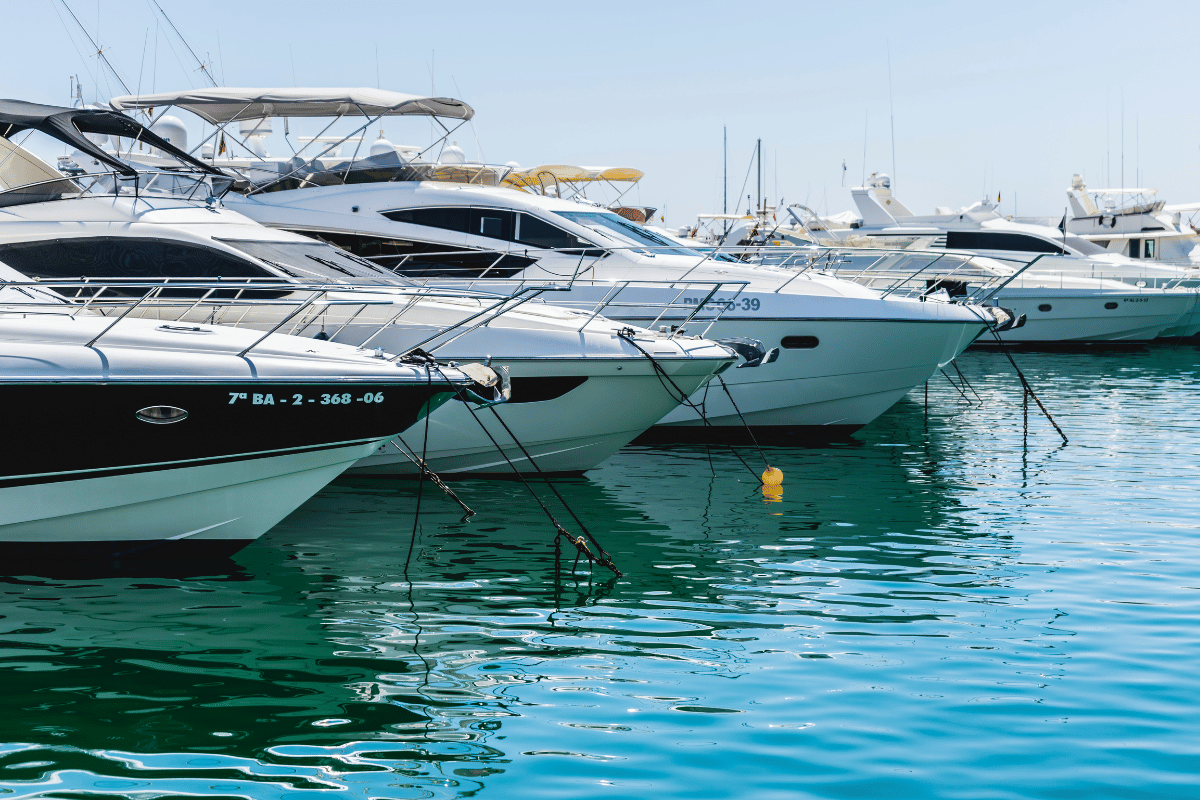
Mooring Pendants: 3-Strand vs. Double Braid
Mooring pendants need to have a good amount of stretch, as the wind and waves will typically exert a fair amount of force on these lines. If the line cannot absorb enough shock, cleats or grommets may be damaged. All Rightrope mooring lines also include a chafe guard to protect the line from rubbing on the boat.
3-Strand Mooring Pendants
- Elasticity: Provides good shock absorption, reducing stress on the boat's cleats and mooring hardware.
- Durability: Capable of withstanding the marine environment, offering reliable performance.
- Ease of Inspection: The construction allows for easy visual inspection for wear and tear.
Double Braid Mooring Pendants
- Strength: Higher strength-to-diameter ratio, offering a robust connection.
- Less Stretch: Provides a more consistent length under load, which can be important in certain mooring conditions.
- Smooth Handling: Better look and feel. Also more color options.
Recommendation: For general mooring purposes, 3-strand mooring pendants offer a good balance of elasticity and durability. However, if you need higher strength and less stretch, double braid mooring pendants are preferable. Explore our 3-strand mooring pendants and double braid mooring pendants to find the best match for your mooring setup.
What about the Equalizer Mooring Pendant?
While 2 standard mooring pendants might be sufficient for most situations, it’s not always an ideal solution. Because wind and waves will hit your boat at odd angles, the force exerted on one line will often be much more than the force exerted on the other. A big swell has the possibility of breaking one of your lines, or ripping off a cleat.
An equalizer mooring pendant, on the other hand, is designed to distribute the load more evenly between two points on your boat, typically the port and starboard bow cleats. This setup offers several advantages:
- Balanced Load Distribution: By connecting to two points, the load is spread out, reducing strain on any single cleat and enhancing stability.
- Enhanced Security: If one connection point were to fail, the second provides a backup, offering an added layer of safety.
For those interested in this setup, our equalizer mooring pendants are crafted to provide balanced load distribution and enhanced security.
Choosing the Right Boat Ropes
We hope this simple guide to 3-strand and Double Braid boat lines is helpful in helping you choose your Right Rope—a set of lines that will keep your boat safe and secure. We’ll see you on the lake!
